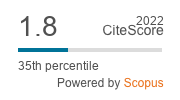Conophthorin from Almond Host Plant and Fungal Spores and Its Ecological Relation to Navel Orangeworm: a Natural Products Chemist’s Perspective
DOI:
https://doi.org/10.29356/jmcs.v57i1.240Keywords:
Amyelois transitella, Aspergillus, conophthorin, fungal spores, navel orangeworm, spiroketalAbstract
The navel orangeworm (Amyelois transitella) is a major insect pest that brings about significant monetary damage to California tree nuts – almonds, pistachios, and walnuts. During their development, larvae of navel orangeworm feed upon the meat of these nuts causing physical damage and ultimately lowering kernel quality. Moreover, the larvae have been purported to vector aflatoxigenic fungi into the food product and thus represent a serious food safety concern. Aflatoxins are toxic metabolites produced by certain aspergilli – specifically for California tree nuts, Aspergillus flavus and Aspergillus parasiticus. Volatiles have played a large role in efforts to control or monitor navel orangeworm moths. For instance, a blend of almond host plant volatiles has recently been found to attract both male and female navel orangeworm moths during field trapping studies. The origin of many of the components within this host plant blend appears to be from the almond host. However, new reports regarding the blend component, conophthorin, imply a fungal origin for this particular volatile. This perspective discusses current investigations directly related to the production of conophthorin, and proposes a new relationship among navel orangeworm, the almond host plant, and ubiquitous tree nut orchard fungi.Downloads
Downloads
Published
Issue
Section
License
Authors who publish with this journal agree to the following terms:
- Authors retain copyright and grant the journal right of first publication with the work simultaneously licensed under a Creative Commons Attribution License that allows others to share the work with an acknowledgement of the work's authorship and initial publication in this journal.
- Authors are able to enter into separate, additional contractual arrangements for the non-exclusive distribution of the journal's published version of the work (e.g., post it to an institutional repository or publish it in a book), with an acknowledgement of its initial publication in this journal.









